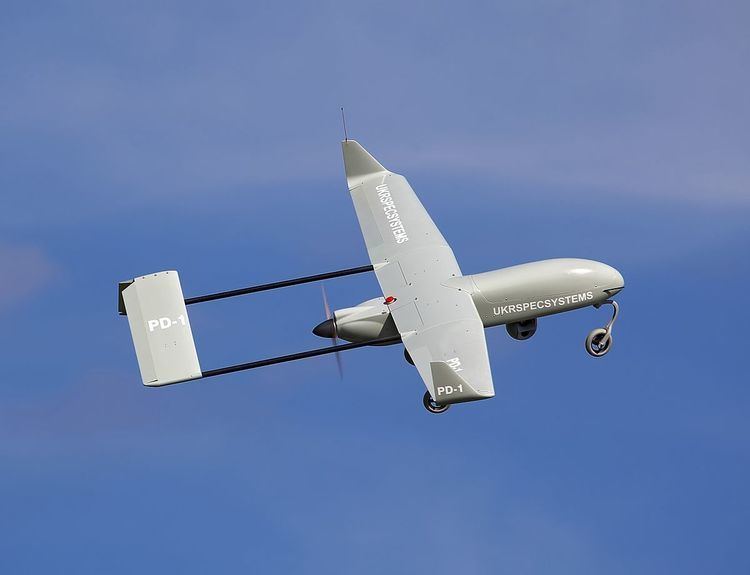 | ||
The war in Donbass gave rise to a civil volunteer movement which provides a diverse support to Ukrainian soldiers fighting in Donetsk and Luhansk oblasts.
Contents
This movement partially emerged from the volunteer movement which helped participants of Euromaidan, and has allied movements specialized in help to injured and internally displaced people, as well as search of missing in action and the killed ones.
History
At the beginning of the war, the Ukrainian army was badly prepared for the fighting, and the government was unable to equip it properly in a short time. Even the food and uniforms were in deficiency. Such weakness of post-crisis state facing external intervention forced active strata of society to take care of the army themselves. Many of these people previously volunteered on Euromaidan, and this experience helped the movement significantly.
In several months, some volunteer initiatives grew from groups in social networks into powerful crowdfunding projects which supplied the army with costly equipment like thermographic cameras, unmanned aerial vehicles, spaced armour and so on. Some of these groups achieved rather high effectiveness and transparency. According to the rating by Ukrainian Philanthropists Association, several of them entered the number of the most efficient and transparent Ukrainian charitable projects, and according to historian Andrew Wilson, standards of transparency of some of these organizations "shamed the Ukrainian state". On the other hand, cases of swindlers who disguised themselves as volunteers were also registered.
In the autumn 2014, the government started considerable collaboration with the volunteers. Several well-known activists received positions in governmental structures, including Ministry of Defence, where they work on improvement of army supply and in other fields. Some of them became assistants and advisors of the minister and the president. In October, a Council of Volunteers was founded at the ministry.
Activities
The volunteers' aid to Ukrainian military units includes:
There are also allied volunteer movements which:
Major volunteer organizations work on the basis of crowdfunding, collecting money through systems of non-cash payments and publishing the lists of contributions and purchases in Internet.
According to an estimate of a noted volunteer, founder of Come Back Alive Vitaliy Deynega, over 2 years of the war (till April 2016), volunteers have collected for the needs of Ukrainian army more than a billion hryvnias (about 50 million USD). One third of this money was gathered by big volunteer organizations.
Structure
The movement is active all over the country, except areas not controlled by the government. It consists of thousands of organizations and individual volunteers. Their precise number is impossible to determine: it is permanently changing, and many volunteers don't publicize their work. The activity of the movement reached maximum in periods of the most intense war. According to an estimate of well-known volunteer David Arakhamia (May 2015), about 14,500 people and over 2500 organizations are engaged in regular and systematic volunteer activity.
The most powerful volunteer organizations include People's Project, National Home Front, Come Back Alive, Phoenix Wings, Combat-UA, Army SOS and others.
According to a sociological survey conducted in September 2014 (after 5 months of the war), one third of Ukrainian citizens had send money on the bank accounts opened for the army by Ministry of Defence, and one quarter had send money to the volunteers. The movement involves many different people and kinds of activity: even schoolchildren of Minor Academy of Sciences of Ukraine suggested numerous models of military equipment on their competitions of scientific and technical projects.
Ukrainian diaspora participates in the movement significantly. Groups in USA, Canada, European and other countries collect money, buy medical supplies and other goods, organize cultural events and support the movement in other ways.
In October 2014, a Council of Volunteers was founded at the Ministry of Defence. It is intended for army supply, repair of hardware, purchase of equipment, improving of military medicine and correction of various flaws in the ministerial work. Next month, Association of People's Volunteers of Ukraine was founded. Its goal is concentrating volunteers' experience and proposal of ideas to the Ministry. The Association comprises about 30 volunteer organizations and delegates its members to the Council.
Public and governmental appreciation
According to several sociological surveys conducted in 2014-2016, the civil volunteers enjoy the maximal people's confidence among all non-state (as well as state) institutions of Ukraine. 60-70% of people trust them mainly or entirely. Confidence to the church is usually slightly lower, and the army, volunteer battalions and non-governmental organizations are the next in the rating. For example, a poll in February 2016 showed that 71% people trusted the volunteers, while the army and NGOs enjoyed 49%, local authorities – 42%, police – 34%, parliament – 8%, and courts – 5%.
Many civil volunteers are awarded with Ukrainian state awards, including order of Bohdan Khmelnytsky, order of Princess Olga, order For Courage, order of Merit, medals "Defender of the Motherland", "For Saving Life", "For Labour and Victory", "For Assistance to the Armed Forces of Ukraine", premium weapon and clocks. In February 2016, a special president's award for volunteers "For Humanitarian Participation in the Anti-Terrorist Operation" was founded.
Many non-governmental organizations, including churches, award the volunteers with their own prizes. Well-known examples of such awards include the order "People's Hero of Ukraine" which is given by a commission of known servicemen and civil volunteers headed by George Tuka, medal of Ukrainian Orthodox Church of the Kyivan Patriarchate "For self-sacrificingness and love to Ukraine" and others.
In 2015-2016, many streets in Ukrainian cities and villages (including Chernihiv, Kharkiv, Poltava, Vinnytsia and Zhytomyr) were renamed "Volunteers' Street" or "Street of Volunteers" after the civil volunteer movement.
